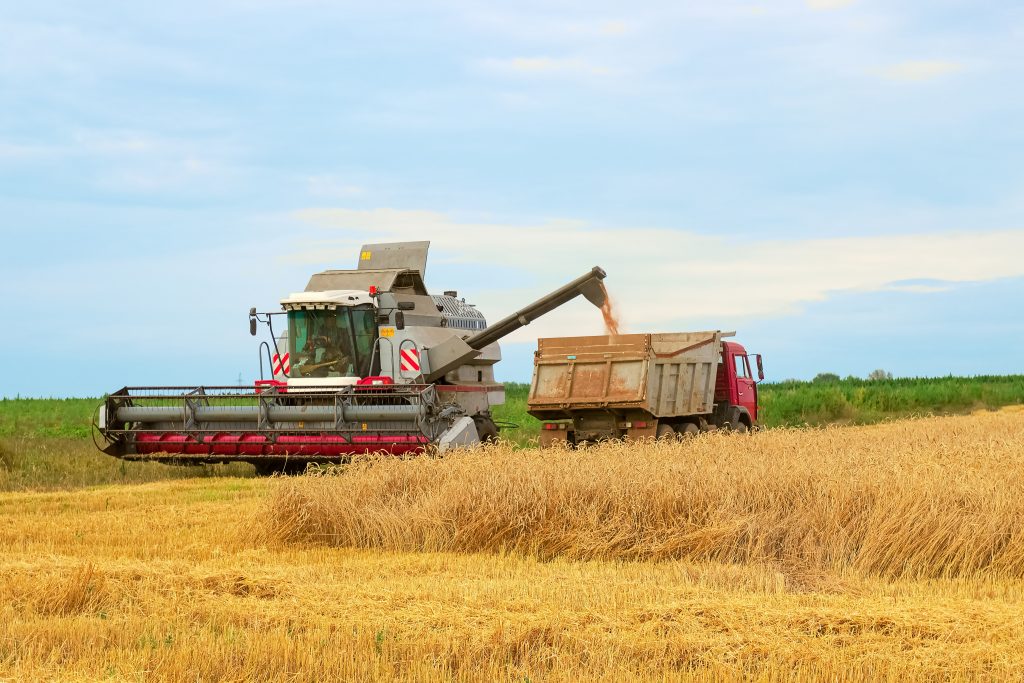Agricultural Sector Retreats From Multi-Year Highs
Corn, soybean and wheat prices have all traded near their 20-year highs in 2022, but concerns about the strength of the global economy have contributed to a recent pullback in the agricultural sector.

Commodity prices have been booming in 2022 as a result of strong demand and rampant inflation. Exhibit A is the energy sector, where crude oil and natural gas prices hit multi-year highs this year.
But other commodity prices have also skyrocketed in 2022, as evidenced by the jagged, upward-trending price charts observed within the agricultural sector. While the “ags” may have cooled off slightly in recent weeks, the prices for many of the staple agricultural crops (corn, soybeans and wheat) remain at the upper end of their 20-year price ranges.
For example, the peak in corn prices during the 21st century was about $8.43/bushel in 2012. In contrast, the price of corn dropped all the way down to $3.50/bushel in July of 2020, as economic lockdowns associated with the COVID-19 pandemic pushed prices toward the lowest levels observed since 2008.
But as the world economy has recovered from the COVID-19 pandemic, so too have prices in the agricultural sector. This April, corn prices surged back toward all-time highs, ultimately peaking at roughly $8.15/bushel.
Today, corn is trading at $7.75/bushel, which represents a decline of about 5% since the April peak.
The price charts for other agricultural commodities look eerily similar, with soybean and wheat prices also cooling in recent weeks, but still trading very close to 20-year highs.
Soybeans have dropped from their June peak of roughly $17.50/bushel down to $16.35/bushel today. The slide in wheat prices has been slightly more intense, with wheat dipping from $12.50/bushel in mid-June, down to $9.50/bushel today.
Much like the energy sector, the recent slide in the agricultural sector appears to be attributed to rising expectations that the global economy will contract during 2022.
Fertilizer Prices Have Also Softened
The rising cost of agricultural commodities hasn’t been a welcome sight for most of the world’s consumers—especially those living at or below the poverty level.
But for farmers, rising crop prices have been critical because the input costs necessary to produce food staples such as corn and wheat have also skyrocketed in 2022.
The rising cost of fuel has had a big impact on the bottom line for most farmers.
Fuel is a necessary expense in the farming sector, and that means that pretty much every farmer on the planet has felt the bite of rising energy prices. For example, diesel fuel averaged under $2/gallon in 2021, but has risen above $5/gallon in 2022.
For many farmers already living on thin margins, that increase has been hard to absorb.
And unfortunately, that’s not the only input cost that’s risen sharply this year.
Another key farm input that’s skyrocketed during 2022 is fertilizer-related products. In fact, a report issued by the office of the USDA indicated that farmers are paying on average 66% more on fertilizers in 2022 as compared with in 2021.
Some of the most common fertilizers include phosphate, potash and dry urea (aka nitrogen). In November of 2020, phosphate traded for roughly $450/ton. In April of 2022, phosphate went for nearly $950/ton. Today, the price of phosphate has moderated slightly, down to $780/ton.
The story in potash prices has been nearly identical—potash prices have risen from roughly $200/ton in November of 2020 all the way up to $550/ton as of today.
Wheat and fertilizer are especially sensitive to an expanded military conflict in Eastern Europe, as that region is responsible for a statistically significant percentage of the global export production in those markets.
Russia, for example, is a key player in the international fertilizer industry. Estimates suggest that Russia is responsible for roughly 23% of global ammonia production, 14% of global urea production, and 21% of global potash production. And Belarus—Russia’s close ally—is another top global producer of fertilizer.
At this time, the war isn’t being contested on Russian soil, which means fertilizer production in that country won’t likely be interrupted. However, accessibility to fertilizer supplies has dropped in 2022 because the Russian government instructed domestic producers to limit exports for the foreseeable future.
This action was taken as a direct response to western sanctions levied against the country—sanctions which Russia views as tantamount to a declaration of war.
Considering these market realities, it’s hard to imagine the bottom falling out of fertilizer prices anytime soon. Instead, it’s likely they will remain bid until a meaningful truce (or ceasefire) is announced between Russia and Ukraine. Or, if Russia were to rescind the export ban on fertilizer products.
The situation for the agricultural crops is likely similar, especially in the wheat market. Ukraine had been one of the world’s top ten producers of wheat, but with the war ravaging the country, wheat output in 2022 will obviously be constrained.
At present, forecasts suggest that the total “winter wheat” harvest for Ukraine in 2022 will be 20 million metric tons, about 38% less than the total harvest last year.
Investors and traders seeking to track and trade the fertilizer market may want to add the following symbols to their watchlists: Bunge Limited (BG), CF Industries Holdings (CF), Compass Minerals International (CMP), Intrepid Potash (IPI), LSB Industries (LXU), Mosaic Company (MOS), Nutrien Ltd. (NTR), and The Scotts Miracle-Gro Company (SMG).
In addition to the futures markets, investors and traders can also access exposure to the agricultural sector through single stocks and ETFs such as the Invesco DB Agriculture ETF (DBA), the Teucrium Corn ETF (CORN) and the Teucrium Wheat Fund (WEAT).
For more on the “ags trade,” check out this recent installment of Splash Into Futures on the tastytrade financial network. Additional information on the wheat trade is also available via this installment of Market Measures.
To follow everything moving the financial markets on a daily basis, tune into TASTYTRADE LIVE—weekdays from 7 a.m. to 4 p.m. CDT.
Sage Anderson is a pseudonym. He’s an experienced trader of equity derivatives and has managed volatility-based portfolios as a former prop trading firm employee. He’s not an employee of Luckbox, tastytrade or any affiliated companies. Readers can direct questions about this blog or other trading-related subjects, to support@luckboxmagazine.com.



















